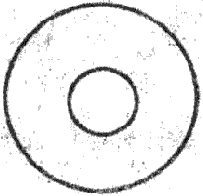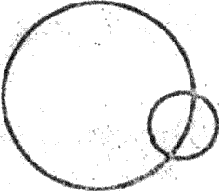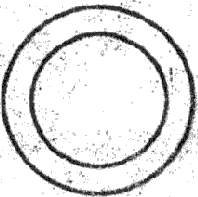阅读理解。
There once lived in Greece a learned man. He was so well known for his wide knowledge of almost
everything that lots of people from all over the country came to learn things from him. The great man
taught his students whole-heartedly and answered their questions with great patience. (耐心)
One day a student asked him, "My dear teacher, didn't you say you yourself have many, many more
questions about things than we do? On the contrary (恰恰相反), we students have far more than you."
With a smile, the teacher drew two circles-one as large as a big wheel (轮子), the other smaller.
"Of course, I've learned much more. But a teacher does not necessarily have fewer questions than
his students. Now look at these two cricles. Within the big one is my knowledge of things, and within
the smaller one yours. Out of the cricles is what is still unknown to us. Since mine is larger, the line
that marks out (划……的界限) the circle is longer. That means I have more chances to face what is
still unknown. And that's why I myself have more questions than you do. The more you learn, the more
questions you have. You will never learn enough, you know."
1. One of his students didn't agree that ______.
A.the teacher should have so many questions
B.the teacher had more questions than the students
C.the students had more questions than the teacher
D.the teacher had as many questions as the students
2. Which of the following pictures tells rightly what the teacher drew?
3. The teacher drew two circles in order to show ______.
A.he knew a lot and was good at drawing
B.how one could get more knowledge
C.why he had more questiones than the students
D.what the students learned had something to do with the circles
4. The passage mainly tells us that ______.
A.we should learn from a learned man
B.we'll never learn enough
C.a teacher should be patient
D.it is never too old to learn
5. The teacher was very famous for______.
A.his patience
B.the drawing of two circles
C.his help to tire students
D.his knowledge
g

 阅读快车系列答案
阅读快车系列答案


